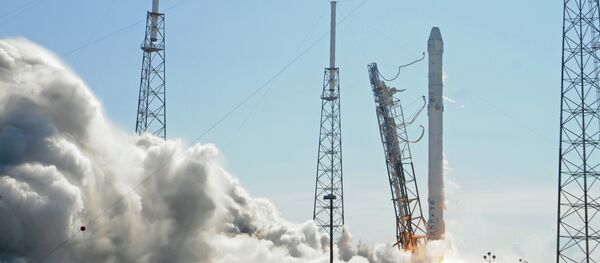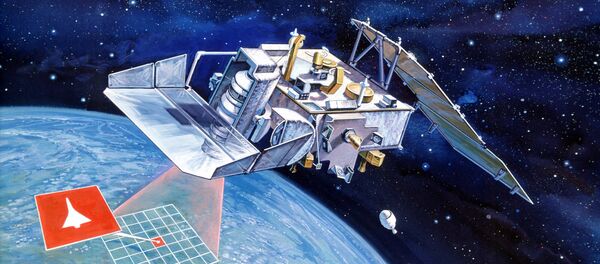The Defense Advanced Research Projects Agency (DARPA), the Pentagon's research office, is fielding proposals for space-based robots to inspect and repair over 400 satellites in geosynchronous Earth orbit (GEO), about 22,000 miles above the Earth.
While satellites in low Earth orbit (LEO) are easy for astronauts to reach, geosynchronous satellites are basically impossible to service. Since they provide vital telecommunications, meteorological and intelligence services, keeping these satellites running has become a major priority of the research agency.
These far-off satellites are also extremely big and expensive. Sputnik reported last December that the Generation III GPS satellites now in the process of being placed into orbit by the US Air Force cost roughly $577 million each, weigh in at 4,764 pounds and can take nearly a decade to design and launch.
That's why on May 22, DARPA is holding a one-day Proposers Day event in Washington, DC, for prospective partners to make their pitches for building robots to keep the devices running by themselves.
According to the solicitation notice put out last Thursday, DARPA wants "a dexterous robotic operational capability in Geosynchronous Orbit (GEO) that can both provide increased resilience for the current US space infrastructure and be the first concrete step toward a transformed space architecture with revolutionary capabilities."
"A robotic servicing vehicle (RSV) comprised of a robotic payload and a spacecraft bus will be jointly developed by DARPA, and the partner team selected," DARPA notes, with the website for the umbrella Robotic Servicing of Geosynchronous Satellites (RSGS) program elaborating that it expects "a servicer spacecraft with sufficient propellant and payload robustness to enable dozens of missions over several years."
"The long-term vision of the RSGS program is to enable a persistent, reliable, cost-effective cooperative robotic servicing capability in GEO, beginning with the robotic servicer developed under the RSGS program and operated by a commercial entity," the notice says. DARPA notes it'll be a five-year project.



